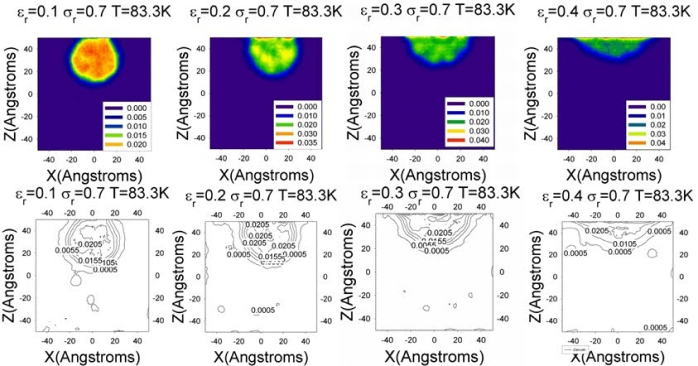Super-Hydrophobic surfaces
Prof. Voronov has made a significant contribution to the study of fluid behavior on superhydrophobic surfaces. Specifically, he used molecular dynamics modeling to correlate contact angle (a macroscopic property that is easy to measure) to slip length (a microscopic phenomenon that is difficult to measure directly), as a part of a project funded by ONR-Navy. His findings increased the understanding of how to better create surface coatings for minimizing friction-drag for ships, submarines and torpedoes. I am the only student author. One of the papers is a highly-cited review published in a centennial special edition.
Selected Publications:
- R.S. Voronov, D. Papavassiliou and L. Lee, 2006:
“Boundary Slip and Wetting Properties of Interfaces: Correlation of the Contact Angle with the Slip Length.”
J Chem Phys, 124, 204701.
- R.S. Voronov, D. Papavassiliou and L. Lee, 2007:
“Slip Length and Contact Angle Over Hydrophobic Surfaces.”
Chem Phys Lett, 441 (4-6): 273-276, doi: 10.1016/j.cplett.2007.05.013
- R.S. Voronov, D.V. Papavassiliou and L.L. Lee, 2008:
“Review of Fluid Slip over Superhydrophobic Surfaces and Its Dependence on the Contact Angle.”
Ind. Eng. Chem. Res., 47 (8), 2455-2477.

